The freeride crowd waited with anticipation, and Georgia delivered. Blessed with great snow and awesome terrain, the third stop of this year’s Freeride World Tour was arguably the best competition in recent years. Marcus Goguen took advantage of the conditions and to secure his first-ever FWT win with a run that looked straight out of a video game. The Canadian prevailed against tough competition, as seven riders finished with scores above the 90-point mark in the ski men’s. Switzerland’s Martin Bender claimed second place and Germany’s Max Hitzig took third. On the ski women’s side, Sybille Blanjean fought off elimination and secured a place at the FWT finals with a much-needed win, showing aggressive skiing and arguably profiting from a crash by French phenom Manon Loschi, who upped the ante for the women with massive tricks in her run but just couldn’t hold it together. Hedvig Wessel from Norway and US skier Lily Bradley completed the podium. In the overall rankings, there wasn’t a major shake-up: Manon Loschi and Max Hitzig are still in the lead. Only two riders managed to jump above the cut-off line to secure qualification for the tour finals in Fieberbrunn and Verbier: Sybille Blanjean in the women’s and Martin Bender in the men’s field.
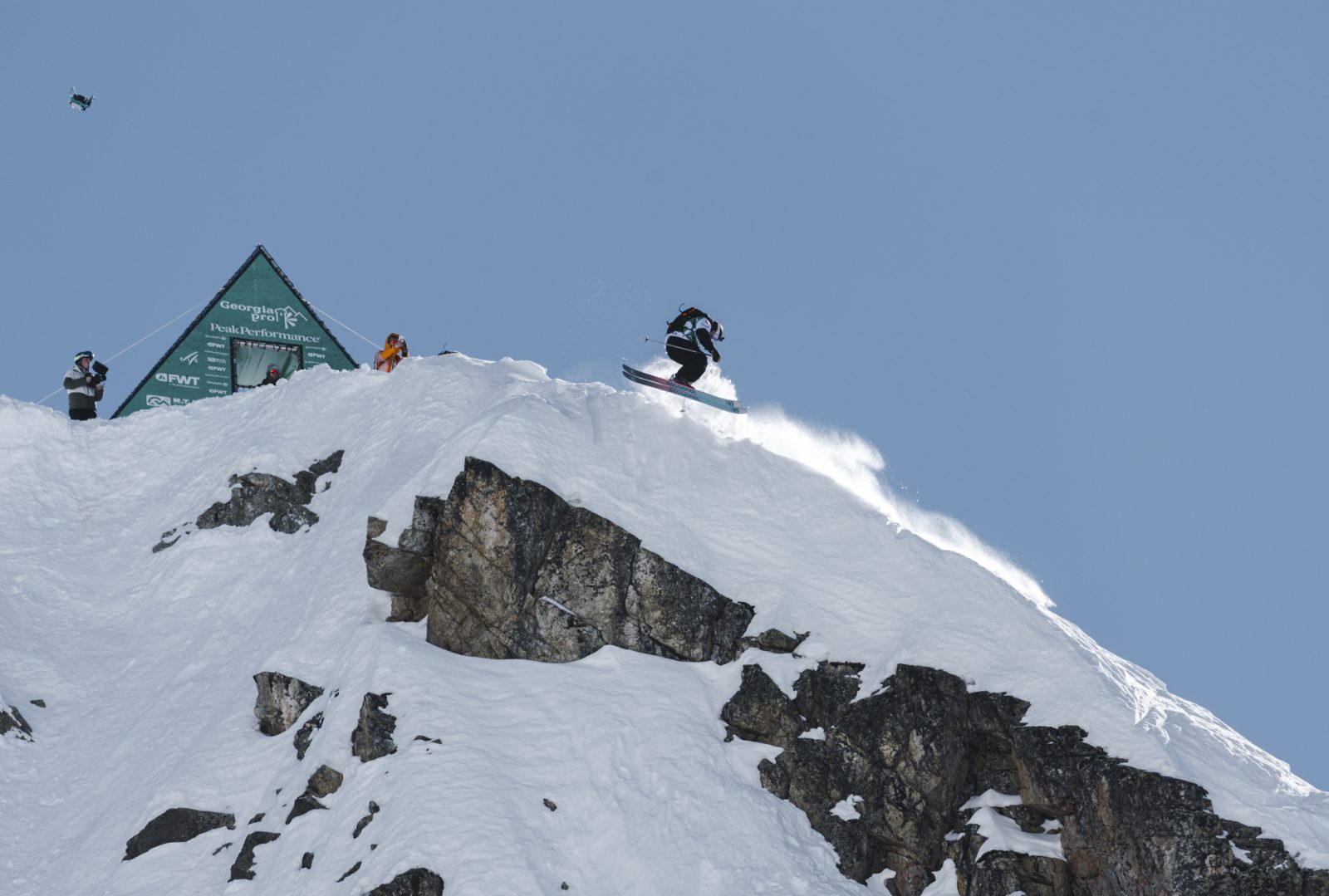
Event News
HighlightA contest for the books
Marcus Goguen wins the Georgia FWT with a run to remember
The Freeride World Tour organization got everybody excited last autumn when they announced that a new stop in Georgia would be added for 2024. The region hosting the event, the Svaneti Valley on the south side of the Greater Caucasus mountains and in proximity to the Black Sea, has become a dream freeride destination over the past decade, rivaling Alaska with massive terrain on high-alpine peaks and abundant snowfall. Anticipation was high when the tour entourage set out for the trip to Mestia, the capital of the region, last week. The event was scheduled with a weather window from March 1–7, but as conditions were just right and the weather forecast called for massive warming, the contest was moved up and took place on Thursday, February 29. The competition face was on the backside of the Tetnuldi Ski Resort around the 3,000-meter mark with mainly north-facing aspects and a wide variety of cliffs, rock sections, wind lips and other terrain features. 30 centimeters of perfect powder graced the pitch with an average slope of 37°, but some sharky sections remained to cause problems for some of the riders.
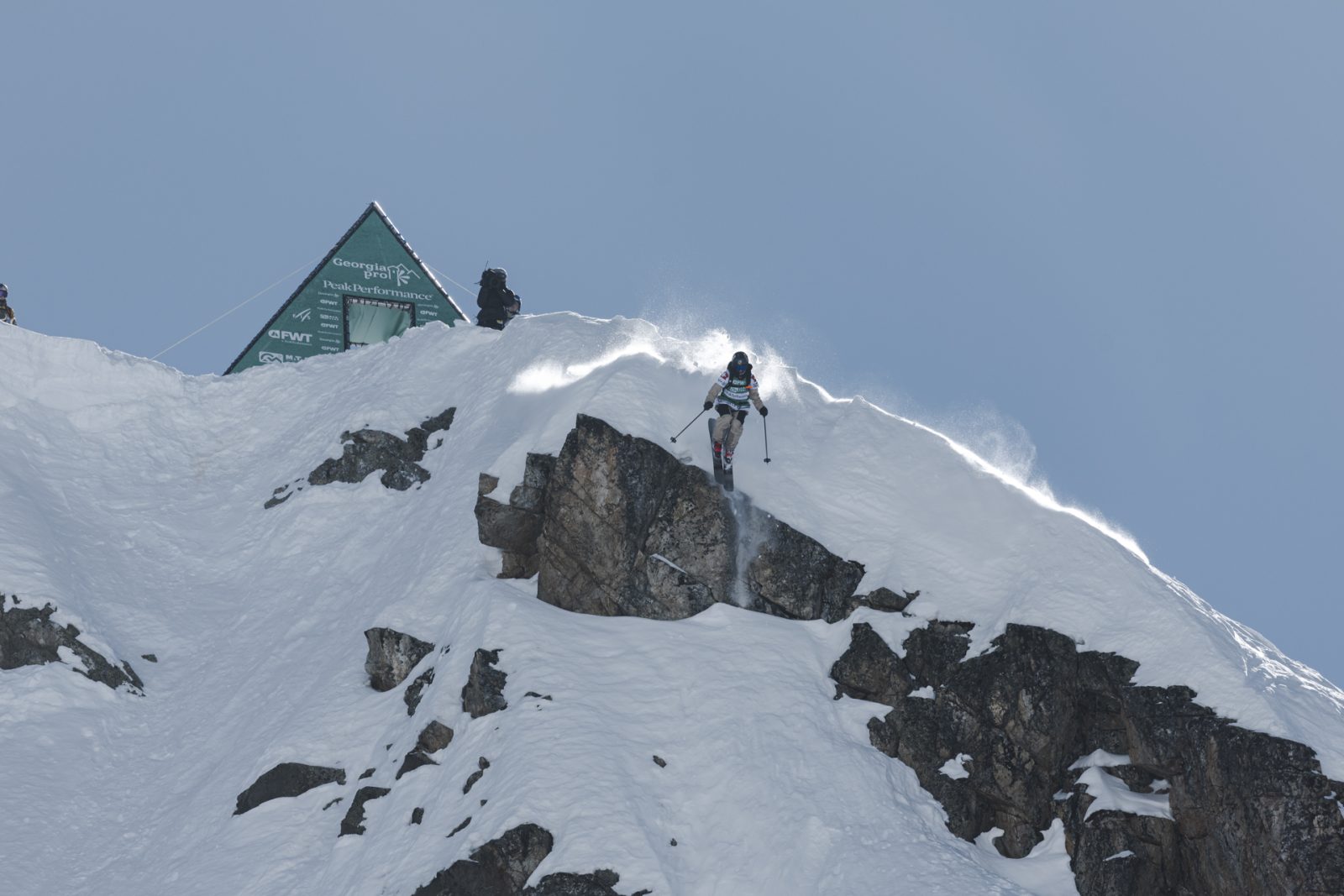
Ski women
In the ski women’s contest, Hedvig Wessel kicked off the action. The Norwegian veteran dropped in fall-line straight from the start with a big cliff drop, added two more airs on prominent terrain features and ended with a rocky section a bit to the skier’s right that saw a lot of traffic and demanded differently sized airs depending on the rider’s approach. Hedvig navigated this section with control and a double of medium-sized airs, finishing her fluid run in style.
Sybille Blanjean delivered almost a carbon copy of Hedvig’s run. She went for the same line, but attacked it with a bit more speed, particularly at the bottom section which the Swiss rider cleared with one bigger jump. Both riders didn’t show any tricks. Sybille took the lead with a solid score but she still had to fear the competition, as she needed a top result to move above the cut-off line in the overall ranking. When Manon Loschi entered the face, it looked at first like Sybille would be kicked out of the leader’s chair, as the young Frenchwoman set out to clinch her first victory on the tour following two second-place-finishes. She dropped in with a sizable air, followed up with a big 360 mid-face and then launched a massive backflip into the bottom section. Manon looked okay on the landing, but then picked up a bit too much speed and had a tumble in the transition to the run-out of the face. It was nevertheless a groundbreaking performance for the women’s ski field, which the judges still awarded with 45 points despite the crash.
Right after, Astrid Cheylus followed her countrywoman’s example, also attacking the face with huge confidence but ultimately crashing on her blazingly fast run with big airs. Molly Armanino took a totally different approach: The American went for a very technical line, navigating through exposed rocky sections with confidence and style. Unfortunately she got caught by her slough towards the end of her line, which washed her down over a few rocks. The spectators and fellow riders held their breath, but Molly came out unscathed. However, the fall cost her massively in her score and she finished low in the result list, which ultimately also cost her the qualification to the FWT finals. With only one good result in Verbier, she was the one unlucky rider to drop below the cut-off line in Georgia.
Fellow American Lily Bradley, on the other hand, managed to stay in the Top 6 of the overall ranking based on a solid performance that earned third place, just ahead o Addison Rafford. Sybille Blanjean’s first-place finish in Georgia bumped her up to fifth in the overall rankings. Manon Loschi still sits in the top spot overall based on her two previous results, followed closely by Hedvig Wessel, while Astrid Cheylus and Zuzanna Witych, who both crashed in Georgia, share third place. All six women are close together, however, and it will be a tough fight for the overall title at the remaining events. Based on the impressions so far, the two young French ladies might be favorites if they manage to finish their runs cleanly.
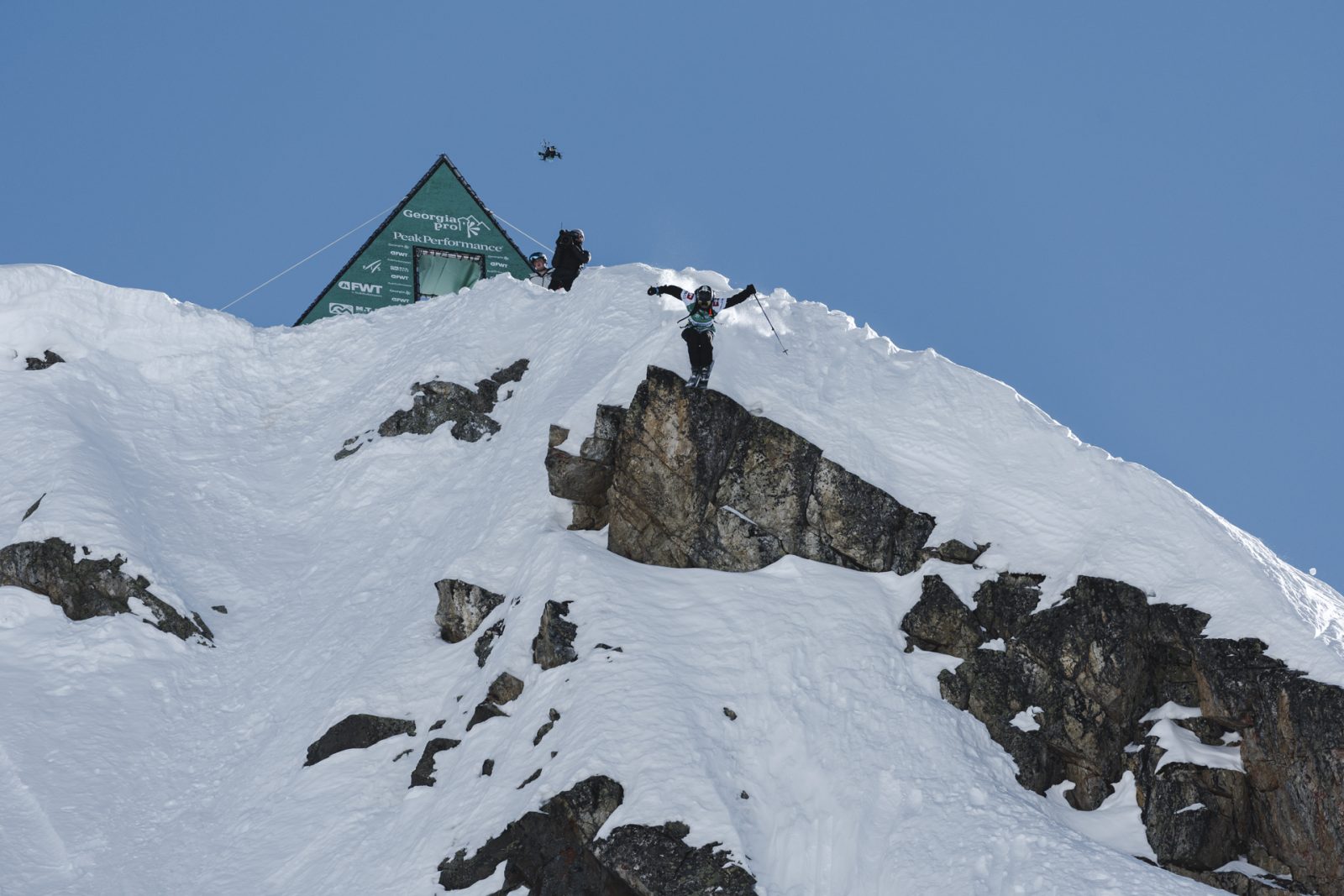
Ski men
When the ski men took over, it quickly became clear that the scene was set for something special. The standard of riding has become so extraordinary in this field that a competition in perfect conditions like this might leave viewers with the impression that they’re watching a video game rather than a real competition. Such is the talent but also the determination and will to risk a big crash for the win. Tour veteran Andrew Pollard was a victim of that development: The American delivered his classic style of inventive skiing with good airs including solid tricks, finding suitable transitions for landings and keeping a good flow. However, his line ended up a bit too much out of the fall-line compared to his younger competition, his speed was just a bit slower and his airs were just a bit smaller. What might have been a winning run just a few seasons back now was just good enough for tenth place, ultimately costing Andrew the qualification to the finals. It could be that this was the last showing of the crowd favorite on the FWT. We hope to see him back, at least on a wildcard at some occasion.
Oscar Mandin set the tone as the first male skier with a huge backflip and a massive 360 in what would prove to be the standard line: pretty much straight down the face from the start through a consistently steep slope interspersed with cliffs and windlips. Unfortunately, the Frenchman skied into the wall of a gully when trying to manage his speed, which sent him into a tumble to the bottom of the result list. Jackson Bathgate chose the opposite approach, with solid skiing including some nice airs and tricks, but on a bit less focused line, which simply isn’t enough anymore. A score of 74.67 placed him on the lower half of the result list, which ultimately meant that the Canadian was the one rider to drop below the cut-off line in the overall rankings after the Georgia stop.
It was Marcus Goguen who set the scene on fire. He started with the same popular drop right out of the start gate, but he was the first to air this with a trick—a nice 360—and he sent it further than anybody else. Continuing with full speed, he added a backflip into a small gully and then approached a rock outcropping that served as a popular launch pad. Again, Marcus upped the ante and sent a cork 720—or maybe call it a D-Spin—down the steep face. Holding it together through a rough section at the bottom, he skied out with mach speed and sent a final windlip much—much!—further than everybody else towards the finish. When he crossed the finish line, everybody was in awe including the Canadian himself… and the judges. It took them a while, but they finally announced a score of 98.00 for the third rider out of the start gate. What a statement!
Things didn’t slow down, though. Next up was former tour champion Maxime Chabloz, who was on the brim of finals qualification before Georgia. The Swiss rider started only with a straight drop, but then followed up with a backflip over a windlip—a “whip lip” according to the live commentary—and a backflip over a highly creative transfer that nobody else found. A triple drop at the bottom to finish a super fluid run was enough for a score in the 90s, but only for seventh place. Crazy! It was still enough to for Maxime make the cut for the tour finals, though. Young Japanese phenom Tenra Katsuno followed up with another super strong run, not too far off from Maxime’s but with different hits and one trick more, which meant sixth place at the event and now fourth overall. He is definitely a threat for the overall title.
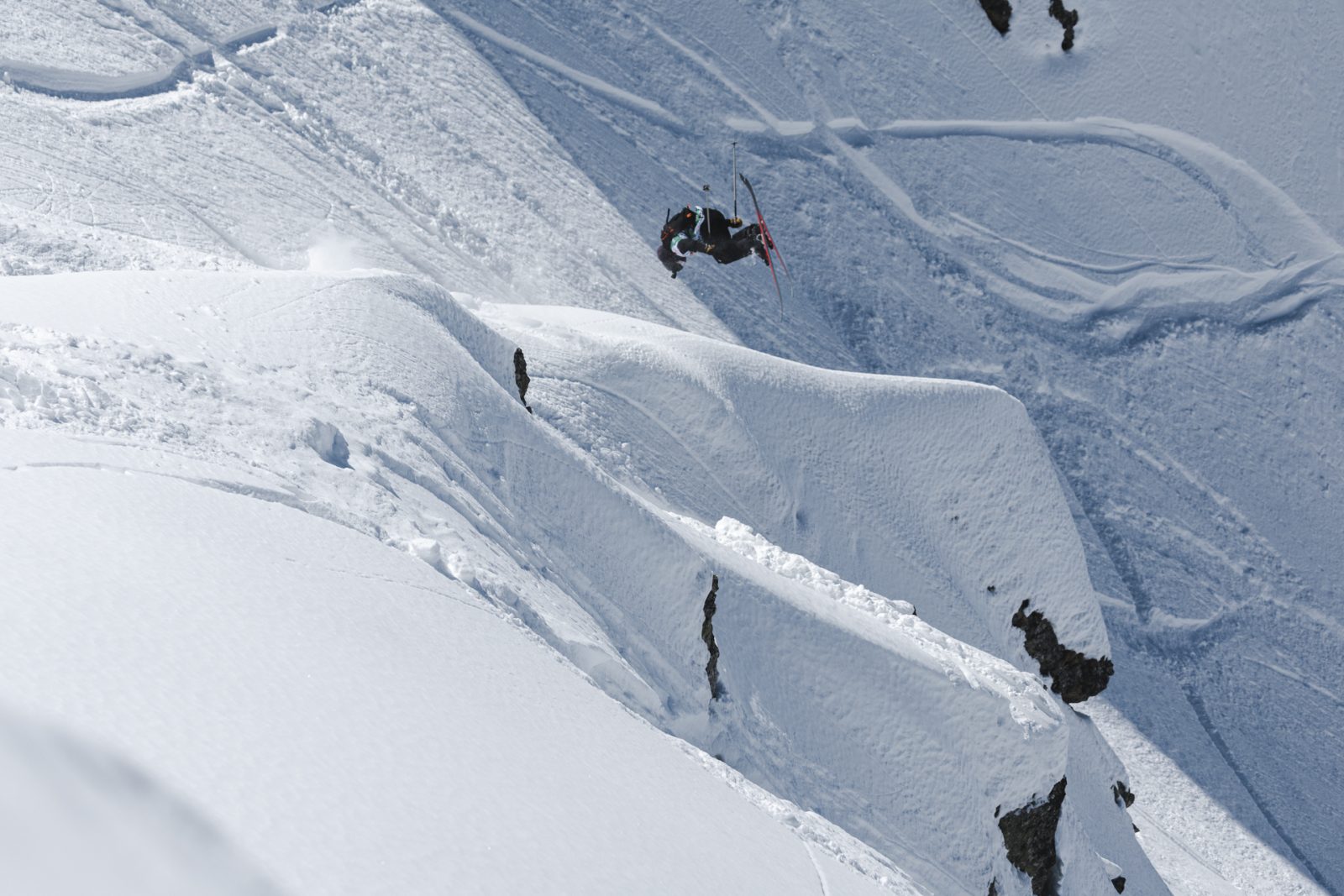
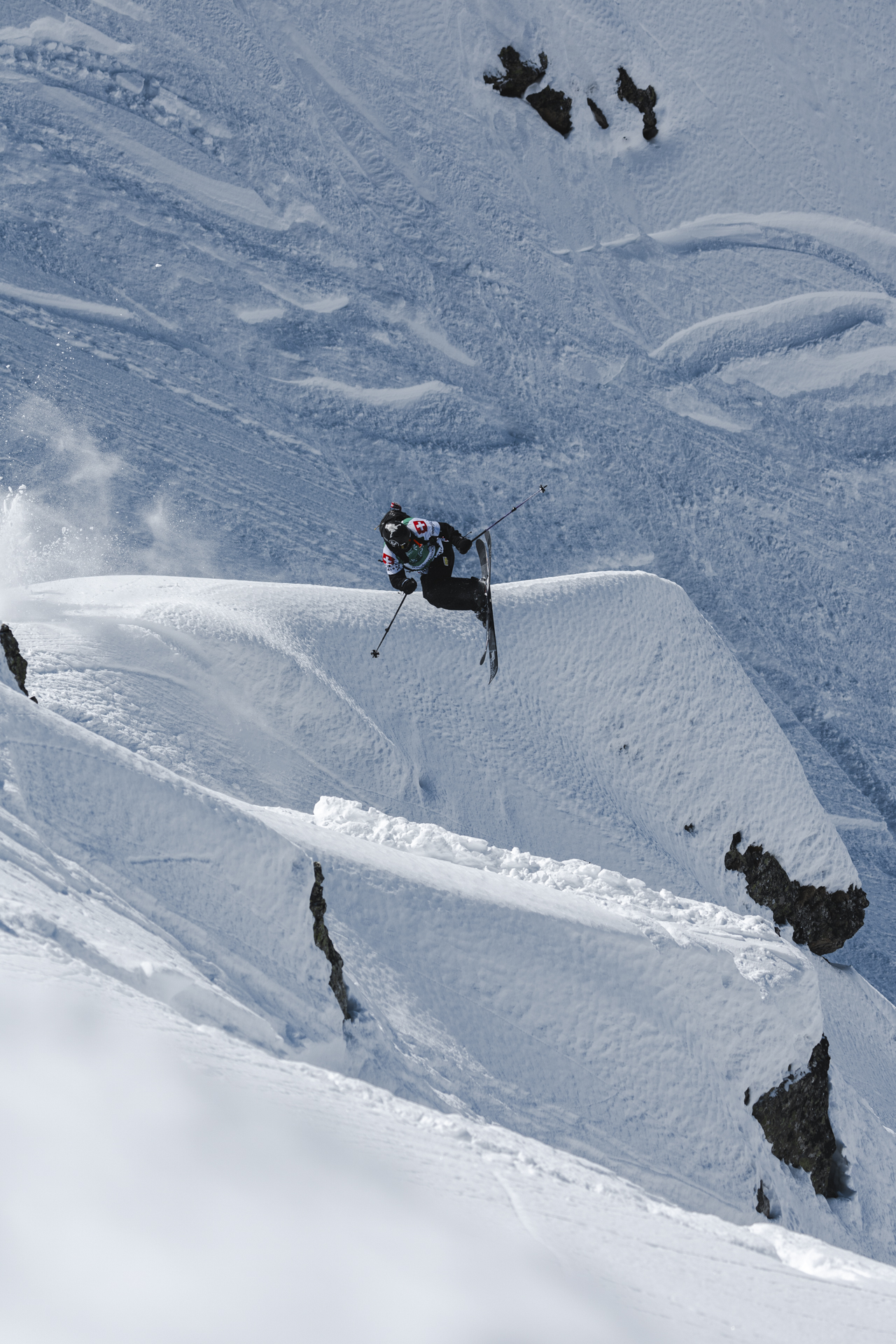
Valentin Rainer, who was also in danger of not making the cut prior to the event, kind of played it safe, which nowadays means an almost straight line through the top part of the face—albeit on the slightly less steep skier’s right side—including three sizable airs, then a solid drop with a backflip mid-face and a big drop clearing the whole rocky bottom section on skier’s right. Only one trick meant only eighth place despite incredible fluidity, but safe for qualification for the finals. In contrast, Blake Marshall put it all out in an attempt to secure a finals spot. A creative line with some massive 360s and good speed propelled him into the top five for the event, but he still missed the cut due to his sub-par results at previous stops.
Max Palm basically needed a win to make it to the tour finals, and for a while he seemed to be on track. Max started differently up top than almost everybody else with a 360 over a cornice to skier’s left, then followed with an incredible transfer backflip over a little rock boulder before getting into the really rocky and technical section of the face along a central ridge. He found a nice cliff drop to an untouched landing, but then got caught by a shark on his next drop. With perfect line scouting until then, he might have taken a bit too much risk in that section. It wasn’t really a mistake in his skiing, but a hidden rock took off Max’s ski right before he set up for a final cliff drop. What a heartbreak! With three crashes out of three runs, though all three of them were kind of unlucky, it wasn’t Max Palm’s season on the FWT.
Martin Bender, on the other hand, managed to make up for two crashes on the previous events. The tour rookie from Switzerland almost copied the run from Marcus Goguen, though there were some differences. Martin dropped in without a trick and a touch smaller off the top cliff, but followed up with a backflip on the “whip lip” instead. Skiing with a bit less speed, he threw a 360 where the Canadian had done his backflip, and then did his version of the cork 720 at the exact same jump. Martin arguably controlled the landing even better, shutting down his speed a bit and adding another drop at the bottom of the face, but his overall less fluid and simply less all-out approach tipped the scale towards Marcus. Still, second place in Georgia lifted the former Junior World Champion above the cut-off line overall.
Then came Max Hitzig. The two-time winner on the tour this season followed a similar approach as Marcus and Martin, but went bigger with a backflip right from the start. He went on to throw a transfer 360 in the mid section which was definitely the most technical approach to that feature, and then on the hit that Martin and Marcus used for their 720s, Max skied out to the very nose of the outcropping to show a super massive backflip. Almost straight-lining the bottom part, he then shut down his speed for another drop at the very bottom of the face which everybody else had passed for good reason. It was a big drop to flat, but Max still managed to get away with it. If Max had landed all his airs cleanly, he probably would have surpassed Marcus Goguen, which seemed almost impossible. But two landings that were a bit shaky—at the very top and at the very bottom—meant Max had to settle for third place this time. He is still in the lead overall with the maximum score due to the fact that one result is dropped for the tour ranking.
Of the rest, two more runs are worth mentioning. Wietien Ho proved again that he will be a force to consider on the FWT in years to come. He skied a very creative line, cleared sizable cliffs with clean tricks—including a huge 360 over the cliff that Max Palm just didn’t get to—and generally showed a unique approach. His score in the low 80s is probably too low for what his line was and arguably he is the one rider that has the right to complain about the judges today, but then again even 10 points more wouldn’t have sent him too many spots up in the result list. In the end, the young Canadian missed the cut for the finals by a few points, but a slightly better result in Georgia wouldn’t have been enough. From what he’s shown in the three events on the tour this year, though, we can be sure to see him back on the FWT in the near future and I wouldn’t be surprised to see him on podiums anytime soon. Kristofer Turdell on the other hand showed the value of experience. The Swedish veteran found another very creative line which not only served to his own strengths but also to what the judges are looking for. Fast, clean riding with solid terrain features and tricks in his airs. Kristofer probably had the biggest backflip of the day with a smart transfer jump, and his trademark effortless style secured fourth place for the day as well as propelled him into third place overall. This former overall winner is far from being done with the FWT yet.
The Freeride World Tour now moves on to Fieberbrunn for a best-of-two format competition on the Wildseeloder before finishing the season with the grand final on the famed Bec des Rosses in Verbier. As of now, there are two clear favorites for the overall title in the ski men, Max Hitzig and Marcus Goguen, with Kristofer Turdell also not too far behind. The rest of the field will have to close quite a gap to make it to the top spot, although nothing is impossible. Stay tuned!
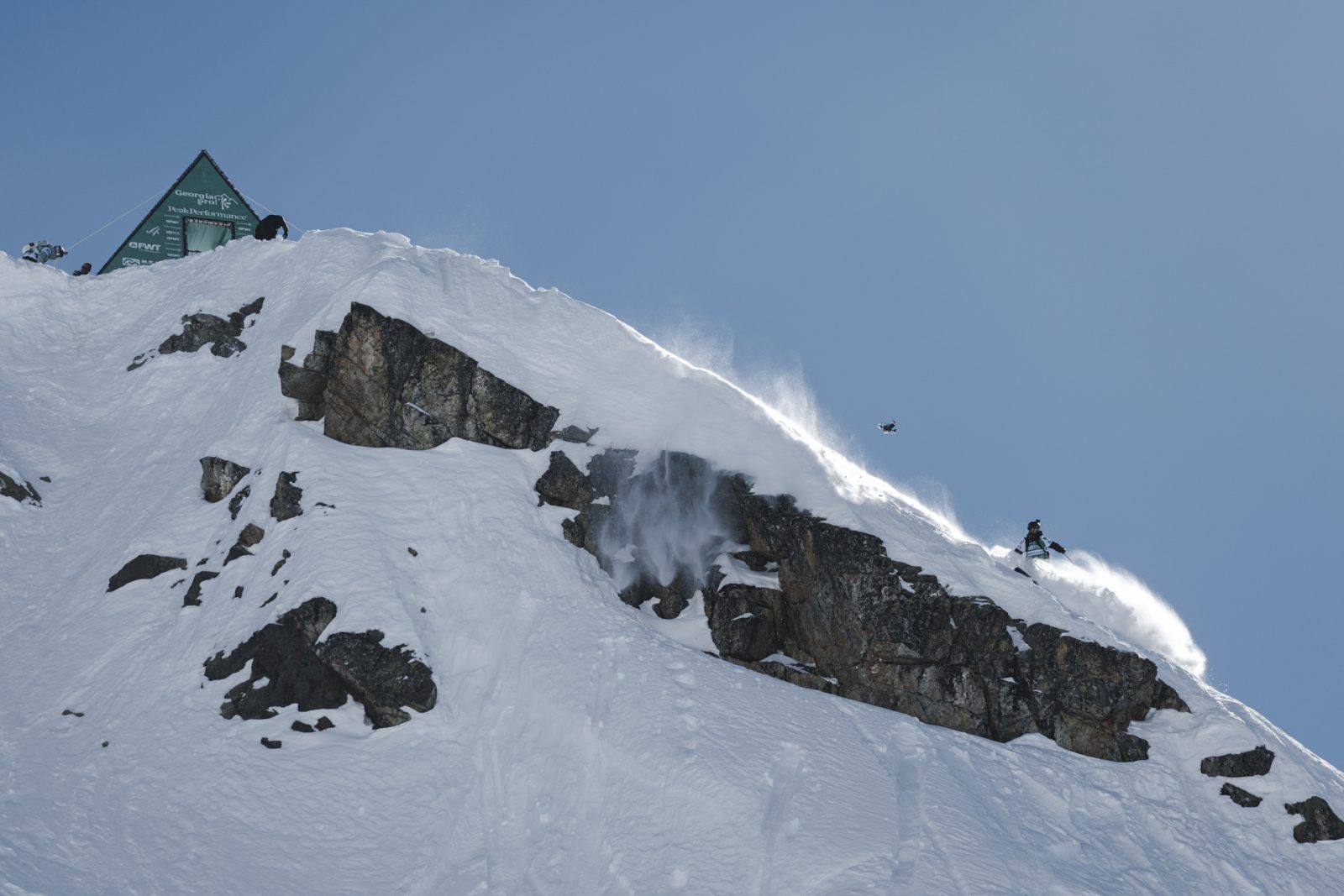
Georgia Pro Results – Ski Women
| Place | Name | Country | Score |
|---|---|---|---|
| 1st | Sybille Blanjean | SUI | 85.67 |
| 2nd | Hedvig Wessel | NOR | 80.67 |
| 3rd | Lily Bradley | USA | 78.67 |
| 4th | Addison Rafford | USA | 78.33 |
| 5th | Manon Loschi | FRA | 45.00 |
| 6th | Molly Armanino | USA | 29.33 |
Overall Rankings after stop 3 – Ski Women
| Place | Name | Country | Points |
|---|---|---|---|
| 1st | Manon Loschi | FRA | 16 000 |
| 2nd | Hedvig Wessel | NOR | 14 400 |
| 3rd | Astrid Ceylus | FRA | 14 095 |
| 3rd | Zuzanna Witych | POL | 14 095 |
| 5th | Sybille Blanjean | SUI | 13 275 |
| 6th | Lily Bradley | USA | 11 520 |
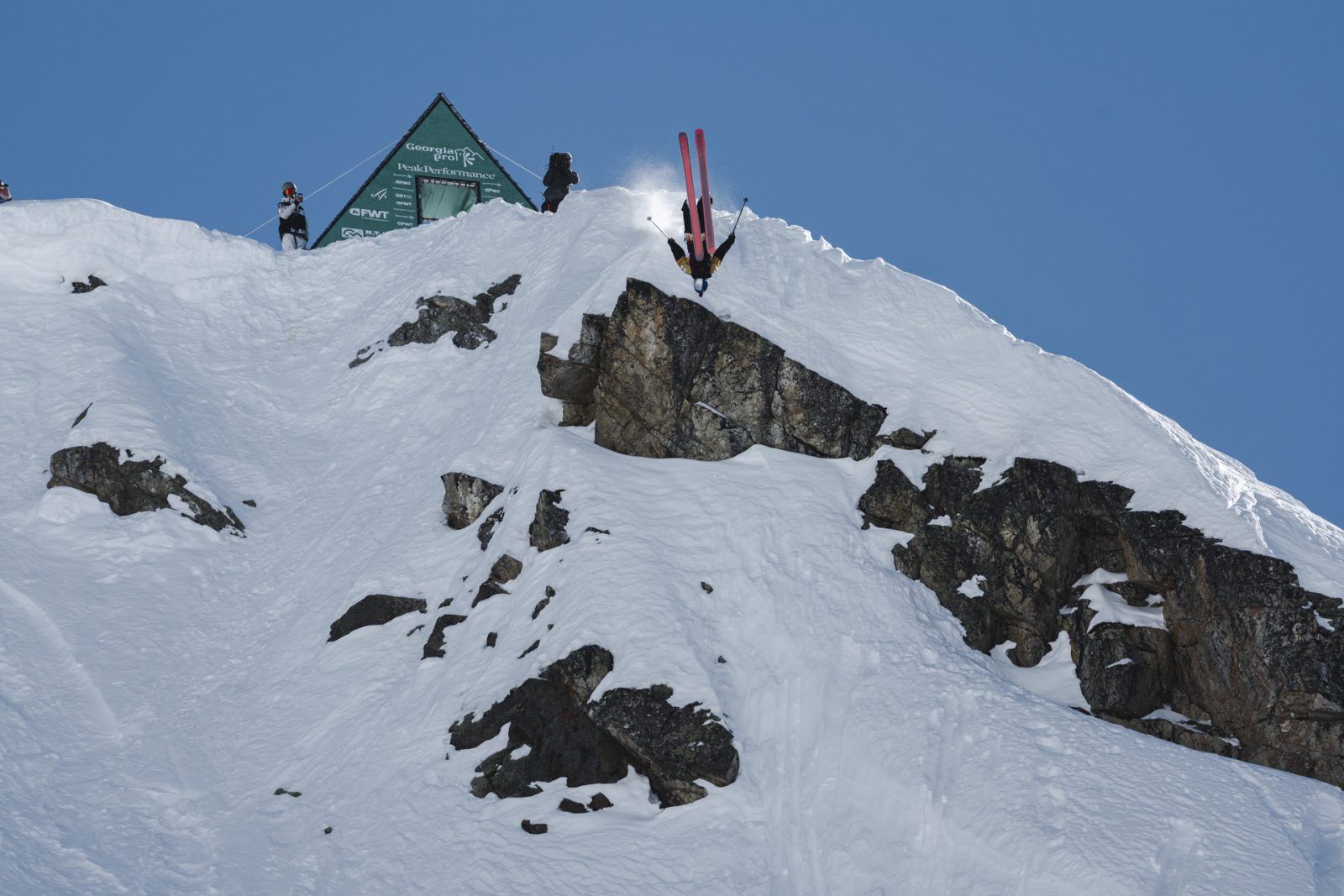
Georgia Pro Results – Ski Men
| Place | Name | Country | Score |
|---|---|---|---|
| 1st | Marcus Goguen | CAN | 98.00 |
| 2nd | Martin Bender | SUI | 94.33 |
| 3rd | Max Hitzig | GER | 93.00 |
| 4th | Kristofer Turdell | SWE | 92.67 |
| 5th | Blake Marshall | NZL | 92.00 |
| 6th | Tenra Katsuno | JAP | 91.67 |
| 7th | Maxime Chabloz | SUI | 90.67 |
| 8th | Valentin Rainer | AUT | 82.33 |
| 9th | Weitien Ho | CAN | 80.67 |
| 10th | Andrew Pollard | USA | 79.50 |
Overall Rankings after stop 3 – Ski Men
| Place | Name | Country | Score |
|---|---|---|---|
| 1st | Max Hitzig | GER | 20 000 |
| 2nd | Marcus Goguen | CAN | 15 120 |
| 3rd | Kristofer Turdell | SWE | 15 120 |
| 4th | Tenra Katsuno | JAP | 13 200 |
| 5th | Ben Richards | NZL | 12 560 |
| 6th | Martin Bender | SUI | 12 320 |
| 6th | Valentin Rainer | AUT | 12 320 |
| 6th | Finn Bilous | NZL | 12 320 |
| 9th | Carl Regner Eriksson | SWE | 12080 |
| 10th | Oscar Mandin | FRA | 11 820 |
| 11th | Maxime Chabloz | SUI | 11 520 |
| Finals cut-off | |||
| 12th | Blake Marshall | NZL | 10 360 |
| 13th | Weitien Ho | CAN | 10 280 |
For complete result lists and rankings, more info on all the riders and events, head over to the FWT website!